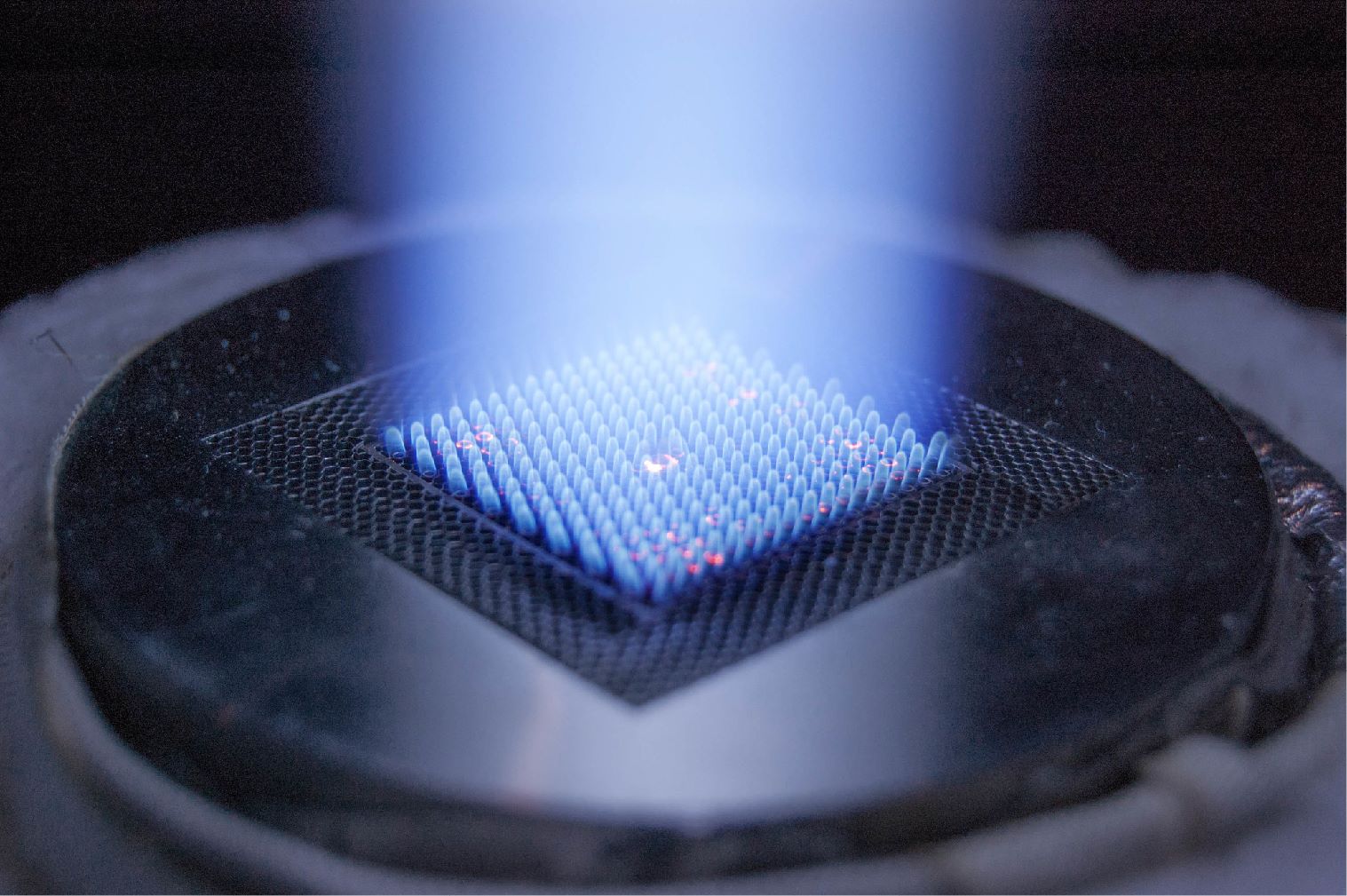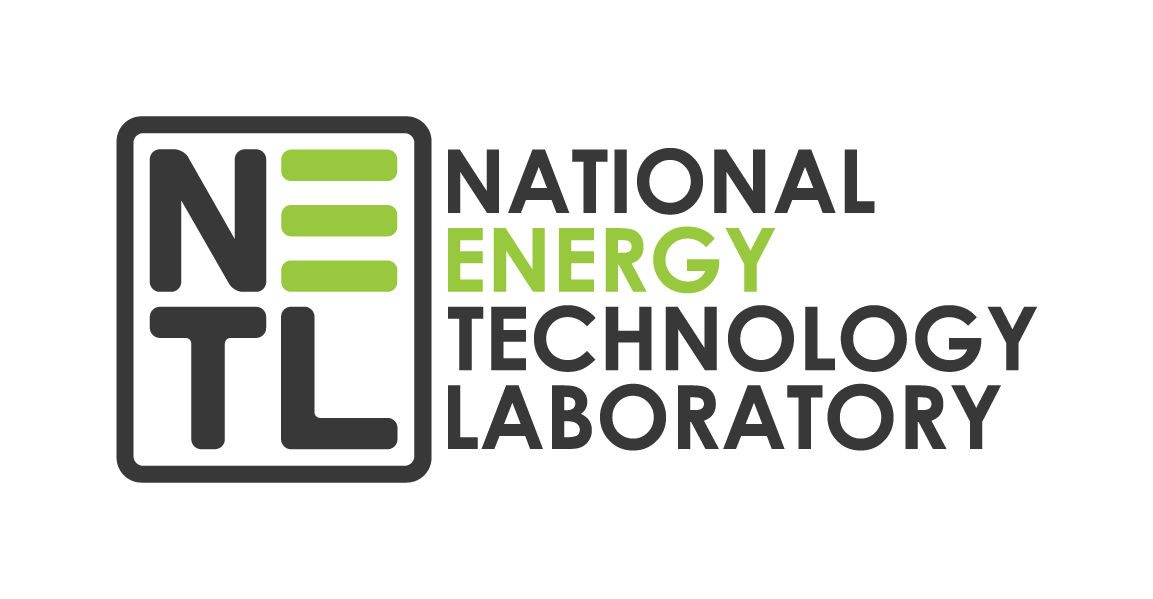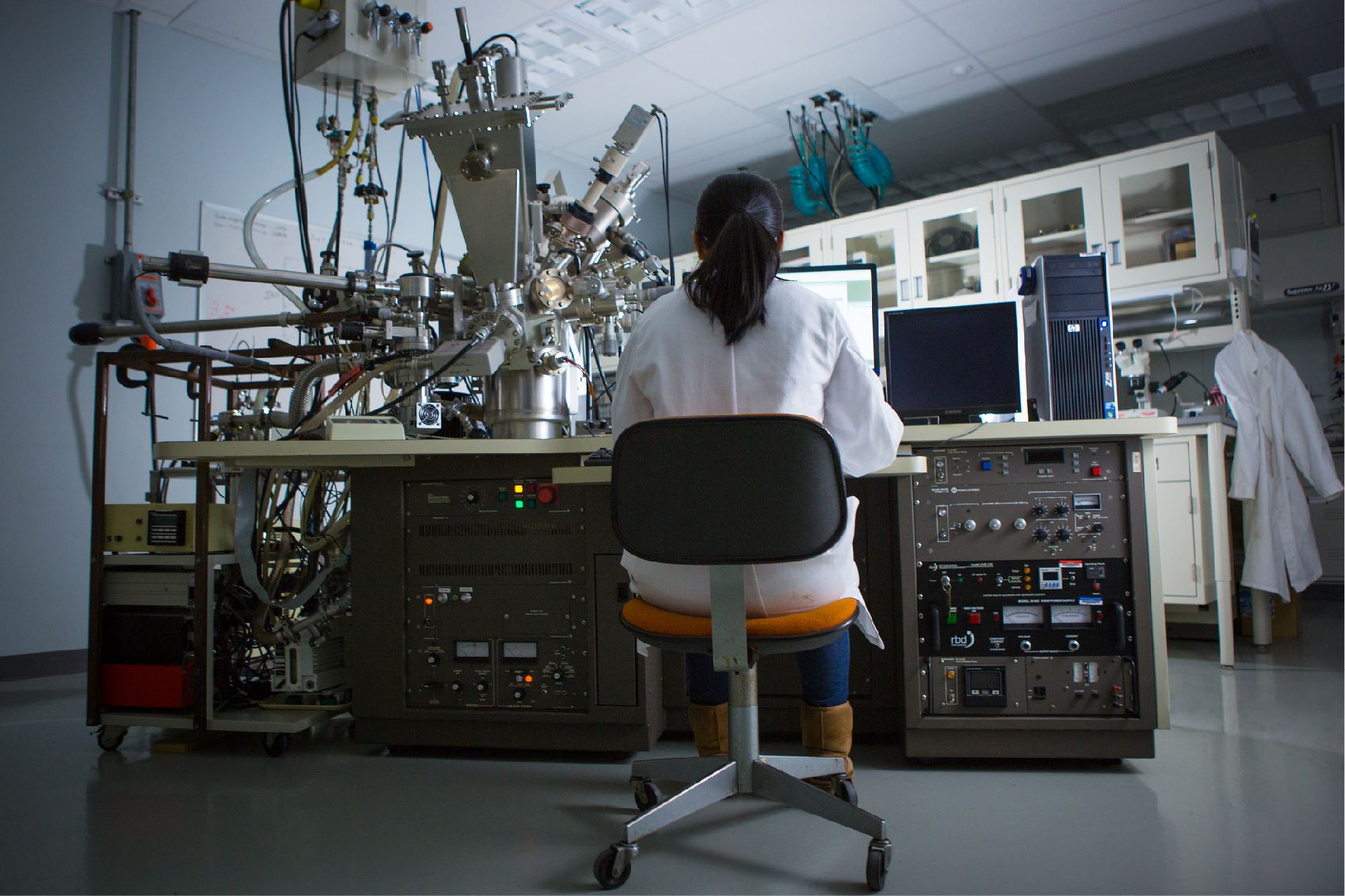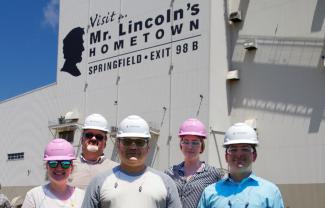NETL’s Point Source Carbon Capture Team recently resumed field visits to research and development sites where crucial technologies are being advanced with the Lab’s oversight and support to reduce emissions of carbon dioxide (CO2), the world’s prevalent greenhouse gas (GHG).
“Once it was safe to travel, our supervisor (José Figueroa) was eager for us to obtain a first-hand look at our projects that are in development to meet the nation’s aggressive climate change goals,” said Krista Hill, a federal project manager.
The U.S. Department of Energy (DOE) Office of Fossil Energy and Carbon Management (FECM)/NETL Point Source Carbon Capture Program is developing the next generation of advanced CO2 capture concepts to support the United States in achieving a 50% reduction from 2005 levels in economy-wide net GHG pollution by 2030, a carbon-pollution-free power sector by 2035 and a GHG-neutral economy by 2050.
“Getting Krista and other point source carbon capture project managers out into the field was a priority to ensure our projects continue to progress on schedule and on budget to advance technologies that are addressing climate change by minimizing the environmental impact of fossil fuel-based power generation and decarbonizing existing infrastructure in the power and industrial sectors,” Figueroa said.
During a four-day period, Figueroa, Hill, federal project managers Nicole Shamitko-Klingensmith and Carl Laird, and researcher Gregory Hackett with NETL’s Energy Process Analysis Team, visited project sites in Illinois and Missouri where NETL is partnering with industry and academia to develop and deploy advanced media (for example, solvents, sorbents and membranes) and other innovative technologies to capture CO2 so it can be safely and permanently stored in geologic formations or converted into value-added products.
In all, the team received updates on seven projects in development under cooperative agreements to advance highly efficient, scalable technologies that are being designed to lower the cost of carbon capture.
The tour began at the University of Illinois at Urbana-Champaign (UIUC), where the NETL contingent visited the Abbott Power Plant, a cogeneration facility that simultaneously produces both steam and electricity for the Urbana campus, and the Illinois Sustainable Technology Center (ISTC) in Champaign.
Projects reviewed included a mixed-salt process (MSP) technology. SRI International, with oversight from NETL, is developing this transformational carbon capture technology that leverages the MSP, a unique, environmentally friendly carbon capture solvent, to reduce capture costs and provide a pathway toward the nation’s decarbonization goals. MSP is being considered for testing at engineering scale at the University of Illinois’ Abbott Power Plant.
The NETL team then traveled to Springfield, Illinois, home of the City Water, Light, and Power Dallman Unit 4, a coal-fueled power plant. Project leaders have completed detailed engineering and are preparing to break ground, construct and operate a Linde-BASF post-combustion technology to capture 90-95% of the CO2 from a slipstream of flue gas from the unit.
Hill explained the visit to Springfield provided important insights. “By touring the project site, we acquired a better understanding of the utility tie-ins and potential ‘pinch points’ our on-site partners will encounter as they integrate the carbon capture process through the plant’s existing infrastructure, which is important to mitigate any impact to the project’s costs and schedule,” Hill said.
In addition to the carbon capture project at the Dallman plant, the publicly owned utility is working with NETL guidance on projects involving the use of captured CO2 as a feedstock to grow algae for the production of animal feed, biochar for use as a soil conditioner and biofuels.
The tour included two other stops:
- Prairie State Generating Company’s Prairie State Energy Campus in Marissa, Illinois. A front-end engineering and design study, also supported by NETL expertise, was recently completed to retrofit the plant’s Unit 2 electric generating station with post-combustion CO2 capture technology based on Mitsubishi Heavy Industries’ advanced recovery process. The study helped define the scope of the retrofit, equipment specifications and labor effort required to execute the project and developed an overall project capital cost estimate.
- Holcim Ste. Genevieve cement plant in Bloomsdale, Missouri. Cement kilns are a significant industrial source of CO2 emissions. After touring the plant and adjacent limestone quarry, the team met with plant operators and discussed an NETL-supported front-end engineering and design study that will utilize a cryogenic CO2 capture system. This capture system will cool flue gas and separate the CO2 as a solid from light gases, melt it and prepare the CO2 for transport.
“No one solution fits all carbon capture needs. Our tour of these sites enabled our project management and systems analysis experts to obtain an up-close-and-personal review of the facilities and the plans they are developing with DOE-FECM/NETL guidance and oversight and significant public dollars to advance innovative carbon capture technologies to address the climate change crisis,” Hill said.
NETL is a U.S. Department of Energy national laboratory that drives innovation and delivers technological solutions for an environmentally sustainable and prosperous energy future. By leveraging its world-class talent and research facilities, NETL is ensuring affordable, abundant and reliable energy that drives a robust economy and national security, while developing technologies to manage carbon across the full life cycle, enabling environmental sustainability for all Americans.




